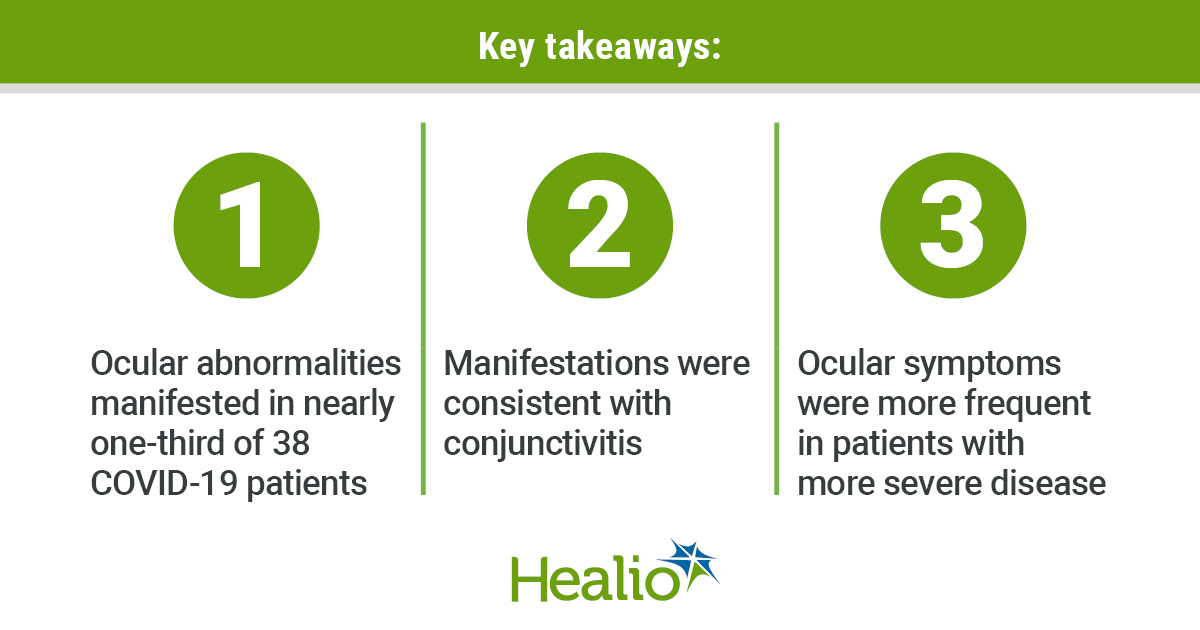Ocular abnormalities more prevalent in patients with severe COVID-19
Nearly one-third of patients in a case series of 38 patients with COVID-19 in Hubei province, China, were found to have ocular abnormalities that occurred more frequently in more severe COVID-19, according to a study.
“The novel coronavirus may be transmitted through the conjunctiva of the eye. It is recommended that doctors wear goggles when consulting patients. Second, the patient’s conjunctival secretions may carry a virus. When checking the patient’s eyes, the doctor must wear protective gloves and wash his hands after the exam,” study co-author Liang Liang, MD, told Healio/OSN.
Proper protective equipment should be worn and ophthalmic equipment should be used to evaluate patients, while manual detection should be avoided, Liang said.
The study included 38 patients with COVID-19. The researchers evaluated the ocular manifestations and viral prevalence in the conjunctivae of the patients.

Twenty-eight patients had positive COVID-19 findings on reverse transcriptase-polymerase chain reaction from nasopharyngeal swabs. In this cohort, two patients had positive findings for SARS-CoV-2 in their conjunctival swab as well as their nasopharyngeal swab.
The other 10 patients exhibited fever and/or respiratory symptoms and lung CT imaging features of COVID-19 pneumonia and were judged to have COVID-19 based on the National Guideline on Prevention and Control of the Novel Coronavirus Pneumonia (PC-NCP).
The ocular manifestations in 12 patients (31.6%) were consistent with conjunctivitis; these included conjunctival hyperemia, chemosis, epiphora and increased secretions. Four of these patients were rated as moderate, two as severe and six as critical. According to the PC-NCP guidelines, moderate grade indicated fever and/or respiratory symptoms and findings on lung CT imaging. Severe grade indicated dyspnea, blood oxygen saturation of 93% or less, and arterial partial pressure of oxygen to fraction of oxygen inspiration ratio of 300 or less. Critical grade indicated respiratory failure or shock or multiple organ dysfunction or failure.
Univariate analysis showed patients with ocular symptoms were more likely to have higher white blood cell and neutrophil counts, as well as high levels of procalcitonin, C-reactive protein and lactate dehydrogenase, compared with patients without ocular symptoms. – by Robert Linnehan
Disclosures: The authors report no relevant financial disclosures.

